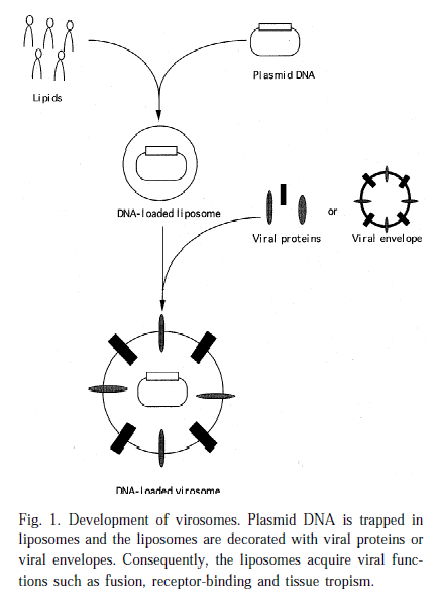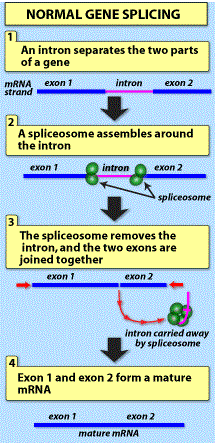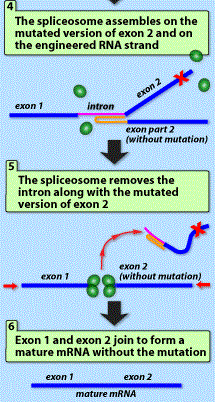TECHNIQUES for transferring cloned genes into cells can be grouped into four categories:
(i) Viral vectors:
(a) RNA viruses (e.g, retroviruses)
(b) DNA viruses (e.g, adenovirus and adeno-associated virus).
(ii) Non-viral vectors:
(1) Chemical methods- such as calcium phosphate-mediated DNA uptake.
(2) Fusion method- that is, fusion of DNA-loaded membranous vesicles, such as liposomes, red blood cell ghosts or proto- plasts to cells.
(3) Physical methods- that is, gene gun, microinjection or electroporation.
(4) Other Methods- such as, naked DNA, Human Artificial Chromosome, Infectious Mammalian Chromosomes, Starburst Polymers, endothelial cells, etc.
Each technique is valuable for certain types of experiments but none can yet be used to insert a gene into a specific chromosomal site in a target cell. Fusion techniques are the least well characterized. As noted, retroviral-based vectors appear to be the most promising approach at present for use in humans.[15]
(iii) Hybrid Methods: Many scientists think that the debate over viruses and nonviruses will merge and that the best vector will probably be a hybrid. Because every method may have shortcomings, some hybrid methods combine two or more techniques. To enhance the efficiency of gene delivery by the introduction of molecules directly into cells, virosomes have been developed by combining liposomes with fusiogenic viral (inactivated HIV or influenza virus)envelope proteins. As shown in Fig. 1, DNA-loaded liposomes were decorated with viral proteins or viral envelope to form virosomes. As virosomes, liposomes acquire viral functions. For example, to create HVJ-liposomes, liposomes are fused with UV-inactivated HVJ. HVJ-liposomes can then fuse with cell membrane, as would HVJ itself, to directly introduce DNA into the cytoplasm. Another advantage of fusion-mediated delivery is the protection of molecules from degradation by endosomes and lysosomes. This method has been more effective in gene transfer in respiratory epithelial cells than methods based on viral and epithelial cells alone.[46] [51] |  |
(iv) Other Approaches: What happens if adding a “good” copy of a gene does not solve the problem of mutation or defect? If the mutated gene encodes a protein that prevents a normal protein from doing its job, then just adding a normal gene will not help. Mutated genes that function in this way are called dominant negative. Repairing the gene or getting rid of it completely may be one solution. The RNA therapeutics company Intronn Inc. has developed a technique for repairing mutations that it calls SMaRTTM, or Spliceosome Mediated RNA Trans-splicing. We know that messenger RNA makes transcripts copied from mutated genes. Instead of trying to replace the entire gene, the SMaRT approach targets and repairs just the section of the mRNA transcript that is mutated. A human gene contains regions called exons that encode the protein, and regions called introns that do not encode the protein. When the gene is copied into mRNA, the RNA machinery uses spliceosomes to cut out the noncoding parts and splice together the coding parts. The SMaRT technology involves delivering an RNA start that pairs with the intron next to the mutated segment of mRNA. This prevents spliceosomes from including the mutated segment in the final RNA product. At the same time, a correct version of the segment replaces the mutated section in the final mRNA product, and the repaired mRNA produces a normal, properly functioning protein.[46][25] |  |


How are these highly controversial and experimental procedures tested? Human testing is very rigidly controlled, but animal models of disease are widely used to test new therapies, and trials are proceeding cautiously, viral vectors still being the most common.[46]